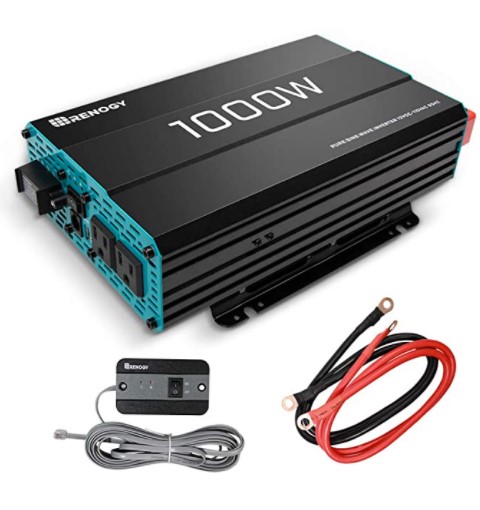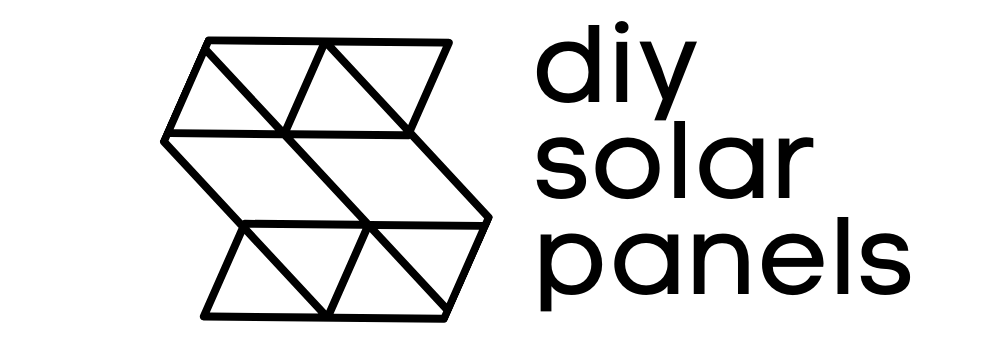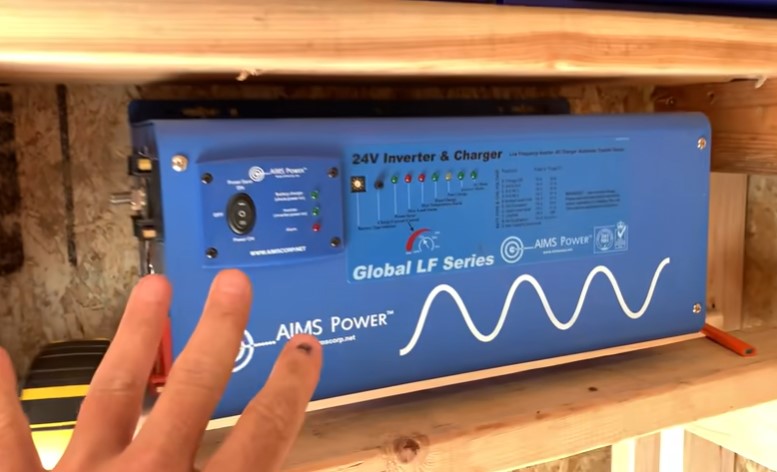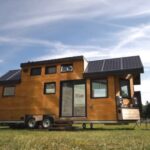Are you on the lookout for the best solar panel inverter money can buy? We hear you. When you get into the green lifestyle and start investing in solar panels, you start learning about other components, including the inverter. What are these and how much do they cost? To help you in the right direction, we’ll tell you about solar panel inverter costs and more below.
If you wish to go solar or perhaps to upgrade an existing system, you ought to know that the inverter is the device that turns power from the solar panels into usable energy for your items. It’s usually the most complex part of a home’s solar system. In other words, the beating heart of any solar PV system is the inverter.
While it can be challenging to find a suitable solar panel inverter for your needs, especially when you are new to the solar world, it is also not impossible. If you search for a solar panel inverter and wish to know more about it, continue reading and get inspired by the following options.
Solar Panel Inverter Cost FAQs
Can solar panels work without one?
No, most solar panels cannot do anything without an inverter.
What is a solar inverter?
In a solar PV system, a solar inverter (or solar panel inverter) is essentially the gateway between your panels and your home. Any electricity that your panels generate must pass through this corridor before it can be used to power your premises.
What is the purpose of a solar panel inverter?
The inverter is the box on the wall, or sometimes on the roof, that takes the direct current (DC) generated by the solar photovoltaic (PV) panels and converts it to alternating current (AC) for use in your household electricity circuits. It’s usually the most sophisticated component of the solar PV system, and unfortunately, it’s also the component most likely to fail first.
Well, solar panels create direct current (DC) electricity, whereas most home appliances need alternating current (AC) electricity. The inverter transforms all DC electricity into AC electricity.
What types of solar panel inverters are there?
String Inverters
A string (or several strings) of solar panels is connected to one inverter. The inverter is mounted on an external wall, typically near the home’s switchboard. This has been a typical solar PV system design for decades and works well for most homes.
Microinverters
The panels and microinverters are usually separate components but are also integrated as an ‘AC solar module’ (the Australian manufacturer Tindo makes these). A microinverter installation is typically a bit more expensive. Because the microinverters are attached directly to each panel on the roof, they are more exposed to weather than a string inverter on the wall. If one fails, a tradesperson has to get up on the roof to work on it.
Hybrid Inverters
These are string inverters with the added capability to connect a storage battery to the solar system and let the system keep running in the event of a blackout.
Hybrid inverters can be more expensive than regular string inverters, but recently the prices of hybrid models have started to fall in line with standard inverters.
Battery Inverters
Battery inverters do the job of turning the stored battery power into AC power for your household circuits and, of course, also deliver solar power to the battery for storage.
Power Optimizers
Power optimizers are not inverters but can be fitted to a system with panels and string inverter strings. They have a similar effect to microinverters in that an optimizer attached to a solar panel will ensure that, should that panel become shaded, soiled, or fail in some way, the panel won’t affect the rest of the string’s output.
How long does an inverter last?
A string solar inverter will usually last around ten years before needing a replacement. However, a handful of premium string inverters come with 12-year standard warranties. In contrast, microinverters typically come with a 25-year warranty and will often last as long as your solar panels.
What size inverter do you need?
This mostly depends on the size of your solar panel array. The size of the inverter is rated in kilowatts (kW) and is the maximum amount of solar-generated power that the inverter can manage. The inverter’s maximum output capacity must be at least 75% of the solar array capacity.
What can cause an inverter to break?
- Poor installation: If an MCS-accredited installer doesn’t fit a solar inverter, it’s likely to face problems further down the line. You need a qualified professional to ensure that your inverter has been appropriately sized in accordance with your solar panels.
- Environmental damage: You must place a string inverter in a sheltered location. In theory, an inverter is busy converting thousands of watts every day; it shouldn’t have to contend with the elements too.
Where should a solar inverter be placed?
String, hybrid, and battery inverters should be mounted on a shaded wall, usually near the main switchboard. Inverters are designed to be installed outdoors and are usually weatherproof, but they don’t like excessive heat; it can degrade their performance and lifespan.
If your inverter can’t be installed in a shaded area, your installer should suggest mounting an awning over it.
What to know about solar panel inverters and Solar Panel Inverter Cost?
Indicator panel and lights
- If the inverter has a display panel, this can show a range of data such as current power production, long-term data, and more.
- Indicator lights will typically show whether the system is running normally, whether there’s a fault, whether the system is currently feeding power to the grid, and so on.
- Have a look at the display/indicators from time to time, say monthly, to make sure there are no errors or warnings needing attention.
Monitoring systems
- Many inverters and optimizers offer more sophisticated monitoring options. A Wi-Fi or Bluetooth link to your home router is often done. Your system’s performance is logged and can be accessed via an app or a website.
- Note that if the inverter or optimizer brand goes out of business, the monitoring system might no longer be supported. Another good reason to go with major brands.
- If the inverter doesn’t have an intelligent monitoring function, you could consider paying for a third-party monitoring system, such as Solar Analytics. These systems may involve ongoing fees for the service but can deliver comprehensive reporting in return.
Security
- If your inverter is connected to the internet, ensure your home network is adequately secured with encryption and passwords. Follow the inverter manufacturer’s instructions for secure online connections.
Solar Panel Inverter Cost
String inverters: The price of the inverter depends on its size and brand. You can pay a string inverter from under $1000 to over $2000.
Microinverters: The cost depends mainly on the number of panels in the system and their rated output. One microinverter can cost around $200. The usual estimate is that a system with microinverters will cost about 20% more than an equivalent system with a string inverter.
Optimizers: Similar but slightly lower costs than microinverters. However, adding optimizers to only a few panels that really need them could cost only a few hundred dollars.
Hybrid inverters: These can cost in the $1000-$2000 range, but many models cost $3000 or more.
Battery inverters: If a battery needs a separate battery inverter, this will typically add $2000-$3000 to the overall cost of the installation.
Renogy 1000W Pure Sine Wave Inverter
1000W continuous, 2000W peak surge during load start-up, 12V to 120VAC pure sine wave with conversion efficiency >90%, reduce conversion loss.
LED indicators for under-voltage and over-voltage protection, over-temperature protection, over-load protection, and short circuit indication.
Cooling funs and ground-fault circuit interrupter (GFCI) protection.

Features:
- 2000 Watts
- Easy to Use
- LED Indicators
kinverch 2000W Continuous/ 4000W Peak Power Inverter
With 3 AC outlets and one 2A USB charging port, suitable for game player, car vacuum, camera, TV, cell phones, fridge, DVD player, floodlight, or anywhere AC power is needed.
Equipped with eight internal fuses and two cooling fans against low-voltage,over-voltage,over-load, short-circuit,over-heat, and over-temperature.
Smart cooling fans only work when the heatsink temperature is over 104℉, which not only ensures you an ultra-silent using experience but also keeps the inverter running safely and effectively at a low temperature.

Features:
- Practical
- User Friendly
- 1x 2000W Power Inverter
Additional Tips on Solar Panel Inverter Cost
- The first time you buy solar panels for your home, the inverter will come as part of the purchase and installation.
- If you’re getting a standard string inverter for residential solar panels, the cost will typically range from $700 to $1,500, depending on the size of your system. Meanwhile, microinverters usually cost around $150-$200 per unit.
- Once it’s installed, familiarise yourself with your inverter. It will usually have a display and some indicator lights; get to know what these mean.
- Whether you opt for smart software monitoring or just a visual check on the inverter’s indicator panel, it’s a good idea to check in on your solar system periodically.
- Inverters tend to fail within the first five years of use; if a couple of panels stop working, the rest of them will keep going, but if the inverter breaks, the whole system goes kaput.
- Given that the solar inverter is the most vulnerable part of a solar PV system. You are making your solar panels resistant to pigeons and hailstorms.



